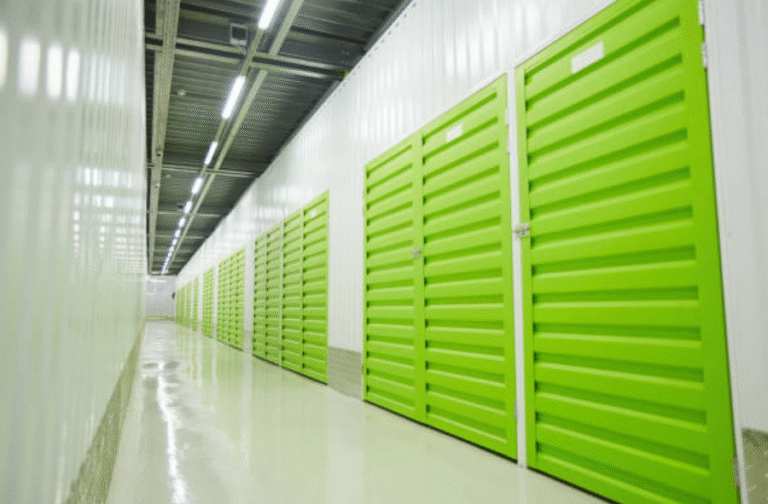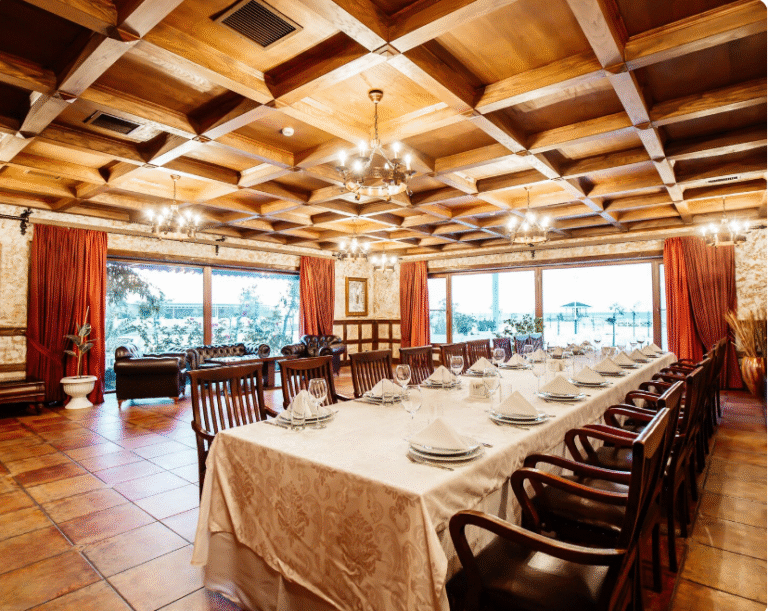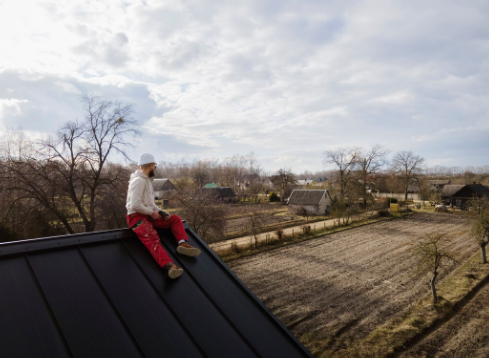Is a Kitchen Remodel Enough or Do You Need Custom?

Understanding Your Kitchen Remodel Options in Las Vegas
Thinking about a kitchen remodel in Las Vegas? It’s a big project, and knowing your options upfront can save you a lot of headaches. You’ve got a couple of main paths: a standard remodel or going the custom route. Each has its own place, depending on what you’re trying to achieve with your space.
Defining a Kitchen Remodel
At its core, a kitchen remodel means updating or replacing elements within your existing kitchen layout. This could involve new cabinets, countertops, flooring, appliances, or a fresh coat of paint. It’s about refreshing the look and feel of your kitchen without necessarily changing the fundamental structure or footprint of the room. Think of it as giving your kitchen a significant makeover.
The Scope of a Typical Kitchen Remodel
A typical kitchen remodel often focuses on improving aesthetics and functionality within the current space. This might include:
- Cabinet Refacing or Replacement: Swapping out old cabinet doors or replacing the entire cabinet boxes.
- Countertop Upgrades: Installing new granite, quartz, or laminate countertops.
- Appliance Swaps: Replacing outdated appliances with newer, more energy-efficient models.
- Flooring Installation: Laying down new tile, hardwood, or luxury vinyl plank flooring.
- Lighting Enhancements: Adding new fixtures or improving the overall lighting scheme.
- Paint and Fixture Updates: A fresh coat of paint, new sink, faucet, or hardware.
The goal is usually to modernize the kitchen and make it more pleasant to use.
When a Standard Remodel Falls Short
Sometimes, a standard remodel just won’t cut it. If your kitchen has an awkward layout that hinders workflow, or if you have unique space constraints that off-the-shelf solutions can’t address, you might find yourself hitting a wall. Maybe you need specialized storage solutions, or perhaps you have a very specific vision for the style that standard options can’t quite match. In these cases, a standard remodel might feel like a band-aid rather than a true solution, leaving you with a kitchen that’s better, but still not quite right.
Key Considerations for a Successful Kitchen Remodel
Thinking about a kitchen remodel? It’s a big project, and getting it right means looking beyond just pretty pictures. You want a kitchen that works for you, day in and day out. Let’s break down some important things to keep in mind.
Prioritizing Functionality Over Aesthetics
It’s easy to get swept up in the latest trends and stunning visuals you see online. But a kitchen that looks amazing but is a pain to use will quickly lose its charm. The layout and workflow are king. Think about how you actually move around your kitchen. Where do you chop veggies? Where do you prep meals? Where do the kids do their homework? A good design makes these everyday tasks feel effortless. This is where a custom kitchen remodel can really shine, tailoring the space to your specific habits.
Consider the classic work triangle: the space between your sink, refrigerator, and stove. If these are too far apart or awkwardly placed, cooking can feel like a marathon. A well-planned layout means fewer wasted steps and more enjoyment in the process.
Don’t let the ‘wow’ factor overshadow the ‘how-to’ factor. A kitchen needs to be a practical workspace before it’s a showpiece.
Choosing Materials That Align With Your Lifestyle
What looks good in a showroom might not hold up to your daily life. If you’ve got little ones running around, super-delicate surfaces might not be the best bet. Dark paint on cabinets can show every little scuff, and porous countertops like marble can stain easily, even from water. Maybe a tougher material like quartz or a durable laminate is a smarter choice for your family.
Think about pets, too. If you have furry friends, flooring that scratches easily might drive you nuts. Luxury vinyl plank (LVP) or tile can be much more forgiving. It’s all about picking finishes that can handle what you throw at them (literally!).
Here’s a quick look at how different choices might stack up:
| Material Type | Pros | Cons |
| Countertops (Quartz) | Durable, non-porous, low-maintenance | Can be pricier than laminate |
| Countertops (Laminate) | Affordable, wide variety of styles | Can scratch or chip, less heat resistant |
| Flooring (LVP) | Water-resistant, durable, good for pets/kids | Can be harder to repair if damaged |
| Flooring (Hardwood) | Classic look, can be refinished | Prone to scratches and water damage |
Avoiding Common Kitchen Remodel Pitfalls
People often make the same mistakes when remodeling. One big one is rushing decisions. It’s tempting to just pick something to get it done, but that can lead to regrets later. Take your time and think through each choice.
Another common issue is not planning for the future. Your needs might change over the years. Thinking about things like aging in place or flexible storage now can save you headaches down the road. Also, underestimating the budget is a classic. Always add a buffer for unexpected costs – they almost always pop up.
Finally, trying to manage too many different people and companies can get messy. If possible, working with a design-build team can keep things streamlined, making sure everyone is on the same page from start to finish. This is especially helpful when considering a custom kitchen remodel where many details need to align.
The Crucial Role of Cabinetry in Your Kitchen Design
When you’re thinking about a kitchen remodel, cabinets are a really big deal. They take up a lot of space, and honestly, they set the whole look and feel of the room. It’s not just about how they look, though. The quality of your cabinets can actually affect how much your home is worth later on. Cheaper cabinets might seem like a good idea to save money now, but they can start looking worn out pretty fast. Plus, they often don’t offer the best storage solutions.
The Impact of Cabinet Quality on Value
Think of cabinets as the backbone of your kitchen. If they’re well-made, they can last for years and years, looking good the whole time. This adds real value to your home. On the flip side, cabinets that are poorly constructed or made from flimsy materials can quickly become a headache. They might sag, drawers might stick, and the finish can chip. This not only makes your kitchen less enjoyable to use but can also be a red flag for potential buyers if you ever decide to sell.
Exploring Custom Cabinetry Options
This is where things get interesting. Custom cabinets are built specifically for your kitchen. This means they can fit into every nook and cranny perfectly, using up space that might otherwise go to waste with those awkward filler pieces you see in standard cabinets. You get to pick the exact materials, the style of the doors, the finish – everything. It’s like getting a tailor-made suit for your kitchen.
- Maximize Space: Custom cabinets can be made to fit exact dimensions, often eliminating the need for standard filler strips and giving you more usable storage. This can add a surprising amount of space.
- Personalized Style: You choose the look, from the wood type and color to the hardware. Your kitchen will truly reflect your taste.
- Smart Features: Think about built-in organizers, deep drawers that slide out easily, or special spots for appliances. Custom options let you add these practical touches.
Working with a company that specializes in custom cabinetry can sometimes be more affordable than you’d think, especially if they have good relationships with the people who make the cabinets. It means you might get that high-end, perfectly fitted look without breaking the bank.
Budget-Friendly Cabinetry Choices
Okay, so custom sounds great, but what if the budget is tight? Don’t worry, there are still good options. Semi-custom cabinets offer a middle ground. They come in standard sizes, but you have more choices for finishes and styles than with fully stocked cabinets. You can also look at stock cabinets, which are the most affordable. The trick here is to choose a reputable brand known for decent quality, even in their budget lines. Sometimes, you can upgrade the hardware on stock cabinets to give them a more custom feel. It’s all about finding that balance between what you can afford and what will hold up over time and make you happy every day.
Navigating the Kitchen Design and Planning Process
Getting your kitchen remodel just right means putting in the work upfront. It’s not just about picking out pretty cabinets or a fancy faucet; it’s about making sure the whole space works for you, day in and day out. This part of the process is where you and your team really hash out the details, turning your ideas into a solid plan. Taking the time here saves a lot of headaches later on.
Initial Consultation and Vision Setting
This is where it all begins. You’ll sit down with your designer or contractor and talk about what you like, what you don’t like about your current kitchen, and what you’re hoping to achieve. Are you looking for more room to cook? Better storage? A place for the kids to do homework while you’re making dinner? Laying it all out now helps everyone get on the same page. It’s about figuring out your priorities, whether that’s a complete overhaul or just making things flow better.
Detailed Design and Material Selection
Once your vision is clear, the design phase kicks in. This is where you’ll see floor plans and maybe even 3D mock-ups of your new kitchen. You’ll be picking out everything from cabinet styles and countertop materials to flooring and lighting. This is also the time to think about those little things, like pull-out spice racks or specific spots for cleaning supplies. Making these choices now means fewer surprises when construction starts.
Here’s a look at how different choices can affect your budget:
| Feature | Estimated Cost Impact |
| Moving walls/plumbing | High |
| Custom cabinetry | High |
| High-end appliances | High |
| New flooring/lighting | Medium |
| Designer/Contractor fees | Varies |
Budgeting and Project Timeline Management
After you’ve got a handle on the design and materials, it’s time to talk numbers and dates. Your designer or contractor will give you a breakdown of the costs and an estimated timeline for the project. It’s important to be realistic here. Things like changing the layout or choosing custom finishes will naturally cost more and might take longer. Having a clear budget and schedule from the start helps keep the project on track and prevents unexpected expenses.
It’s easy to get caught up in the excitement of a new kitchen, but remember that a well-planned project is the foundation for a successful remodel. Don’t rush through the design and planning stages. The more thought and detail you put in now, the happier you’ll be with the final result.
When to Invest in Custom Solutions for Your Kitchen
Sometimes, a standard kitchen remodel just won’t cut it. You know, the kind where you swap out cabinets for similar-sized ones, maybe get new countertops, and call it a day. That’s fine for some folks, but if you’re looking for something more, something that really fits your life and your space, then custom is the way to go. It’s about making your kitchen work perfectly for you, not just look a bit nicer.
Maximizing Space with Tailored Cabinetry
Standard cabinets are made in set sizes, and often, there are gaps left over – those awkward little filler pieces that just collect dust. With custom cabinets, they build them to fit your exact measurements, down to the inch. This means you get more usable storage space. Think about it: those filler strips could have been drawers or shelves! Custom cabinets can be designed to fit into every nook and cranny, making your kitchen feel bigger and much more organized. It’s like a puzzle, but instead of a picture, you get more room for your pots and pans.
Here’s a quick look at how custom cabinets can make a difference:
| Feature | Standard Cabinets | Custom Cabinets |
| Size | Fixed, often requires fillers | Built to exact measurements |
| Space Utilization | Can leave unused gaps | Maximizes every inch |
| Design Flexibility | Limited options | Fully customizable |
Incorporating Unique Features and Accessories
Beyond just fitting the space, custom solutions let you add all sorts of clever things. Need a spot for your stand mixer that pulls out easily? Or maybe a built-in charging station for all your gadgets? How about deep drawers that slide out all the way, so you can actually see what’s in the back? These aren’t things you typically find in off-the-shelf cabinets. Custom allows you to think about how you actually use your kitchen and build in solutions for those specific needs. It makes everyday tasks smoother and keeps clutter hidden away.
- Pull-out shelves for appliances
- Integrated trash and recycling bins
- Spice racks that swing out
- Built-in organizers for drawers
- Appliance garages to hide toasters and blenders
Achieving a Truly Personalized Aesthetic
This is where your kitchen really starts to feel like yours. Custom cabinetry means you can pick the exact wood, the finish, the door style, and the hardware. You’re not limited to what the big box stores have. Want a specific shade of blue? Or a unique wood grain? You can get it. It allows you to create a cohesive look that matches your home’s style perfectly, whether that’s modern, farmhouse, or something totally unique. It’s about creating a kitchen that not only functions perfectly but also reflects your personal taste and makes you happy every time you walk in.
When you’re thinking about custom, it’s not just about fancy looks. It’s about making your kitchen work better for you day in and day out. If you find yourself constantly wishing for more space, better organization, or features that just aren’t available in standard options, then investing in custom solutions is probably a smart move. It might cost a bit more upfront, but the long-term benefits in functionality and satisfaction can be huge.
The Stages of a Kitchen Remodeling Project
So, you’ve decided to give your kitchen a makeover. That’s exciting! But what actually happens from the moment you decide to start until you’re chopping veggies on your new countertops? It’s not just a whirlwind of hammers and paint. A well-planned kitchen remodel follows a pretty clear path. Think of it like baking a complicated cake – you need to follow the steps in order, or things can get messy.
Demolition and Structural Changes
This is where the old has to go to make way for the new. Your contractor will carefully remove existing cabinets, countertops, flooring, and appliances. If you’re changing the layout – maybe moving a wall or re-routing plumbing or electrical – that happens now too. This phase can be noisy and a bit disruptive, so be prepared for some dust and noise. It’s the necessary mess before the magic can really start.
Installation of Finishes and Fixtures
Once the heavy lifting and structural work are done, it’s time to start putting things back together, but way better! This is when your new cabinets get installed, followed by the countertops. Then come the flooring, the sink, the faucet, the lighting fixtures, and finally, the appliances. Seeing all these pieces come together is when your kitchen really starts to look like the one you dreamed up. It’s like watching a puzzle get solved, piece by beautiful piece.
Final Walkthrough and Styling
Almost there! Before the crew packs up completely, you’ll do a final walkthrough with your contractor. This is your chance to point out anything that doesn’t look quite right or any small details that need tweaking. Once everything is approved, the final touches are added – maybe some decorative hardware on the cabinets, a fresh coat of paint touch-up, or arranging your favorite kitchen accessories. This is the moment your newly remodeled kitchen officially becomes yours, ready for you to cook, gather, and live in.
Frequently Asked Questions
What’s the difference between a standard kitchen remodel and a custom one?
A standard remodel usually involves updating existing features like cabinets, countertops, and appliances without changing the kitchen’s overall layout. A custom remodel, on the other hand, allows for a complete transformation, including rearranging the layout, building cabinets to fit specific spaces perfectly, and adding unique features tailored to your exact needs and style. Think of it as buying off-the-rack versus getting a tailor-made suit.
How do I know if I need custom cabinets?
You might need custom cabinets if standard sizes don’t fit your space well, if you have unusual kitchen layouts, or if you need very specific storage solutions. Custom cabinets are built to fit your exact measurements, making the most of every inch and offering unique organizational features that off-the-shelf options can’t match.
What are the main things to consider before starting a kitchen remodel?
Before you start, think about how you actually use your kitchen. Is it just for cooking, or is it a place where your family hangs out? Consider durability of materials – if you have kids or pets, you’ll want tougher surfaces. Also, think about the layout: does the ‘work triangle’ (sink, stove, fridge) make sense? Finally, don’t forget about storage – is there enough space for everything?
Is a kitchen remodel a good investment?
Yes, a kitchen remodel is generally a great investment. It can significantly increase your home’s value and improve your daily life. People often spend a lot of time in their kitchens, so making it a functional and enjoyable space is important. High-quality updates, especially in the kitchen, tend to give you a good return when you sell your home.
What are common mistakes people make during a kitchen remodel?
Some common mistakes include rushing decisions, focusing too much on looks instead of how the kitchen will actually be used, not thinking about future needs (like aging in place), underestimating the total cost, and trying to manage too many different workers. It’s important to plan carefully and work with experienced professionals.
How much does a kitchen remodel typically cost?
The cost can vary a lot! A basic remodel might start around $20,000 to $30,000, but if you’re changing the layout, using high-end materials, or getting custom everything, it can easily go up to $80,000, $100,000, or even more. Factors like the size of your kitchen, the quality of materials, and whether you need to move plumbing or electrical lines all play a big role in the final price.





